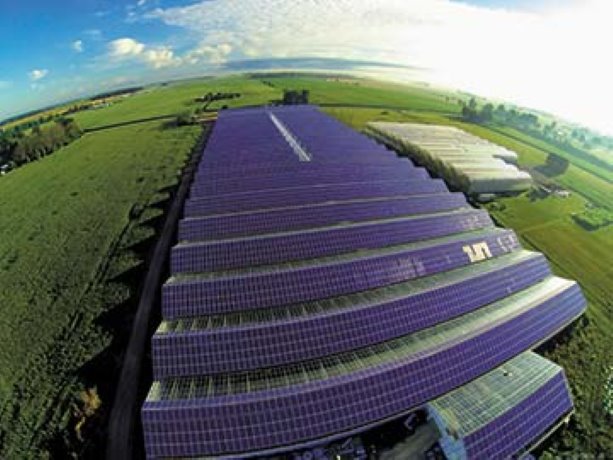The six-acre solar rooftop project on top of a Vine Fresh Produce Ltd. greenhouse is an eyeopener under Ontario’s Green Energy Act, according to a specialist in the solar power industry.
“This project, in the scale and magnitude of it, you would only see from a conglomerate and this is actually an individual farmer who did this,” said Sentinel Solar director of sales and marketing Andy Bennis.
Bennis says the Act’s feed-in-tariff (FIT) program helps equalize the playing field because it allows both residential home owners and large building owners to participate in producing energy regardless of their size.
The system, which covers six acres of greenhouse roofing, is the largest FIT solar rooftop in Ontario. It is also the world’s largest system that utilizes microinverter technology by Enphase Energy Inc.
There are over 9,000 modules on the roof that are individually powered by its own microinverter, which makes for an efficient and reliable system, says Sentinel Solar which also installed the system on the greenhouse rooftop.
“It’s a very distributed architecture,” said Bennis.
“There’s no big central box where all the power is coming to that can fail and bring the whole system down.”
The design allows for easy troubleshooting and maintenance because each module is individually monitored unlike typical large-scale rooftop solar rooftops where all the modules are connected to one large system.
“It’s also a very safe system,” he added.
“The system doesn’t use any high-voltage DC wiring that you see on larger rooftop system out there. It’s all low-voltage AC. It’s easily maintained by a standard electrician.”
The rooftop is expected to produce 2.3MW annually, and with that amount of power being generated, the Strathroy, Ont. greenhouse operator had to make significant upgrades to the distribution system in order to connect to the Hydro One grid.
As a result, the system is monitored and managed by Hydro One who have the ability to flick the on and off switch via a substation.
“There’s a lot of additional hardware and construction required to actually connect the system to the grid and that did take some time,” said Bennis.
Altogether, it took about a year to get the system up and running with 300 to 400 modules being installed per day.
Because the system is built over an existing structure, Bennis said the scale of the project could’ve taken up to 10 acres of land if it was built on the ground.
“One of the key things about this project is that it is based in rural Ontario,” Bennis said. “It’s not taking up any usable rural farmland. That’s not necessarily an ecological issue but it’s been a big issue for the overall utility space in the market place today where large ten-megawatt parks are being built and they’re taking tens of acres of farmland.”
Sentinel Solar says the system is able to power approximately 150 homes, mostly in the nearby community and reduce over 11,200 tonnes of CO2 per year.
Follow @DCN_Canada on Twitter for more construction news.



Recent Comments
comments for this post are closed